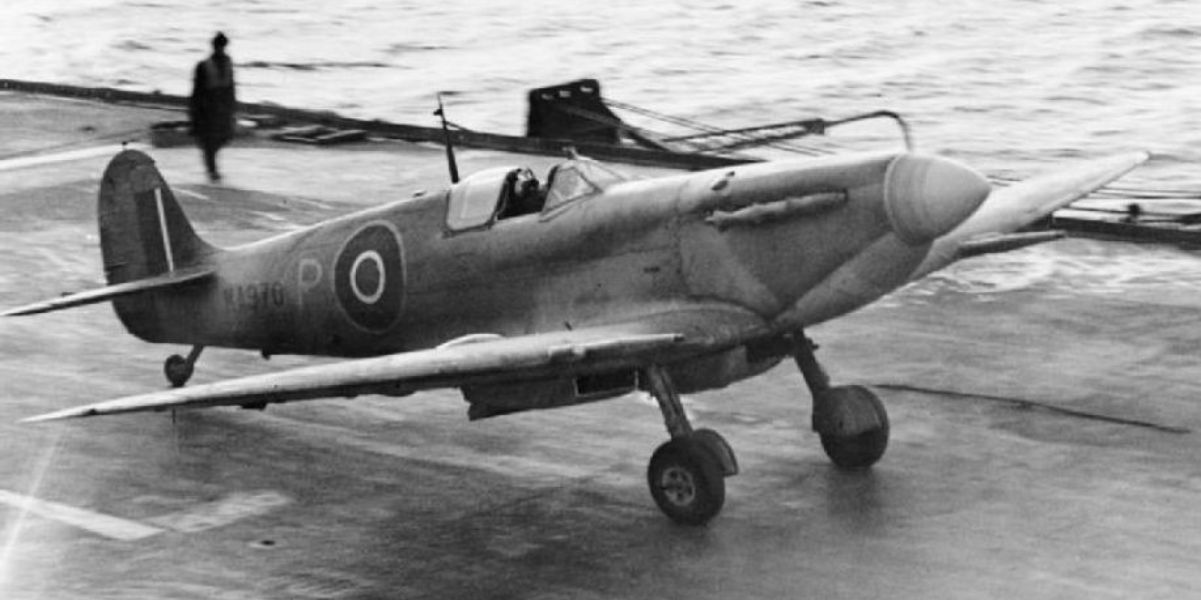A navalised version of the well-known Spitfire designed for use on aircraft carriers was the Supermarine Seafire
2646 Seafires were built and used by the Fleet Air Arm of the Royal Navy from November 1942 to the early 1950s, following the end of the Korean War.
It saw action on D-Day, during the Allied invasions of Sicily and Italy, during Operation Dragoon in southern France, and during the Allied landings in North Africa (Operation Torch). With the Pacific fleet, the Seafire demonstrated its ability to intercept and destroy the dreaded Japanese kamikaze attack aircraft.
Seafire Vs Corsair Vs Sea Fury
A remarkable consensus amongst pilots describes how the Spitfire flew: beautifully responsive and maneuverable in the air, but difficult to handle on the ground and land, especially on an aircraft carrier, according to Naval aviation historian Matthew Willis in his book Supermarine Seafire. The over-light elevators and the over-heavy ailerons are usually the subject of complaints.
The comments that follow, from two pilots (one modern, the other contemporary), provide some flavor and also draw comparisons with the Vought Corsair and Hawker Sea Fury, two of the Seafire’s competitors during and after the war.
Commander R ‘Mike’ Crosley DSC (former CO of 880 and 887 NAS)
“Once the tail was raised – by prop slipstream over the tail and a small push on the stick – and the pilot could see where he was going, the true enjoyment began. The acceleration was like a racing car. Once airborne, the Seafire responded with the sensitivity of a polo pony to nearly all our ignorant demands upon it. It behaved in its normal habitat with such unselfish grace and with such rapid response and power, that we knew we were being allowed to fly a thoroughbred.
“We had several interesting dogfights with the much larger and more powerful F4U Corsair. In turning dogfights, the Corsairs were unable to get a bead on us if we saw them first. However, they could, like an Fw 190, out-dive us… Also, above 15,000 feet they were faster than Seafire L IIIs. However, the F III with its two-speed, uncropped supercharger, could easily keep up with the Corsair at 20,000 feet and above.

“The Corsair could not out-turn a Seafire I, II, or III as has been claimed. However, if the Corsair slowed down to about 90 knots and then the pilot selected half-flap —provided it was down to its last 50 gallons of fuel — it could hold a Seafire LIII at this speed and configuration at heights above 10,000 feet.”
Lieutenant-Commander Chris Götke AFM (former CO Royal Navy Historic Flight)
“You can see the progression from a Seafire versus a Sea Fury. The Seafire [F 17] has got a short-block Griffon VI with about 2,000 hp. When you’re in the Seafire, it’s incredibly noisy compared with a Centaurus, because you have all the exhausts and they come out down by your feet, pointing at you. The Centaurus engine is very good at lower rpm, so when we go cruising on it we’re down at 1,500 rpm which gives you about 220, 230 knots. The Griffon is complaining by the time you get it down to 1,800. For the pilot, one of the things you don’t want is to overboost an engine.
“The Sea Fury was one of the first that you can’t overboost. In a Sea Fury, as you go up on the boost, the rpm automatically rises. So, if you’re in combat and you’re just holding on, and then you get bounced, you can just slam the Centaurus open and it will go up to 2,700 and plus nine boost. You can’t do that with the Griffon in the Seafire.

In display, both the Seafire and the Sea Fury are lovely aircraft
“Regarding the handling and maneuvering, if you were doing 300-plus knots in the Seafire, you’d be getting very heavy ailerons, but in the Sea Fury you could do 100 knots or 400 knots, and it’s the same feel. It’s a very well-harmonized system in that aircraft. The Seafire is very, very light in pitch, so is quite manoeuvre-unstable. You can get maneuvering very quickly, but if you hit turbulence as you’re pulling up, you almost have to unload, it’s so light in maneuver.
The Sea Fury has 183 gallons internally, plus it had another tank which took it to about 200. That’s almost twice what you could get inside a Seafire, and the Seafire uses fuel at about the same rate. Actually, with the Centaurus, you can happily get down to 40 gallons an hour. In display, though, both are lovely aircraft.”
Supermarine Seafire is published by Mortons Books and is available to order here.
Photo by Imperial War Museum via Wikipedia

